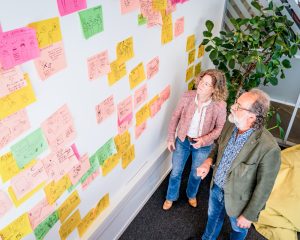Business Model Innovation in an Exponential World
The Eindhoven Engine Academy offers a training and mentoring journey for ‘Business Model Innovation in an Exponential World’. If an assignment is clear and we know what we would like to develop, systems engineering is the right route to follow. But what do we do if we do not really know how the innovation should look? Or even worse, we do not fully understand the problem and therefore have no idea what we can do? We call these wicked problems and they are more common than expected. Corona is the obvious one and shows us every day what it means to live in a complex world surrounded by exponential events. We see the difficulty in coming up with integrated, systemic solutions for the different dimensions of the pandemic. But what about the Future of Work, for instance? Will we continue to work more remotely? What will the impact be on real estate (estimates range from 20 to 40% less demand for office space), on public transportation (the NS CEO expects the company to be more seriously strained and on mobility? How can we use exponential technologies to support a more creative and humane society?
Those wicked problems need another approach, another focus: not so much on developing the optimal solution but rather on optimally defining the problem and exploring all possible paths towards impact. This means that we think creatively and systemically about all of the dimensions of the business model within the exponential reality. It is not so much the technological innovation that makes the difference but rather the business model. Going back to the Future of Work, can we identify the business models that might still work in the near future (even though we do not know how this will look)? Companies and individuals need to take decisions, invest, develop and reorganize.
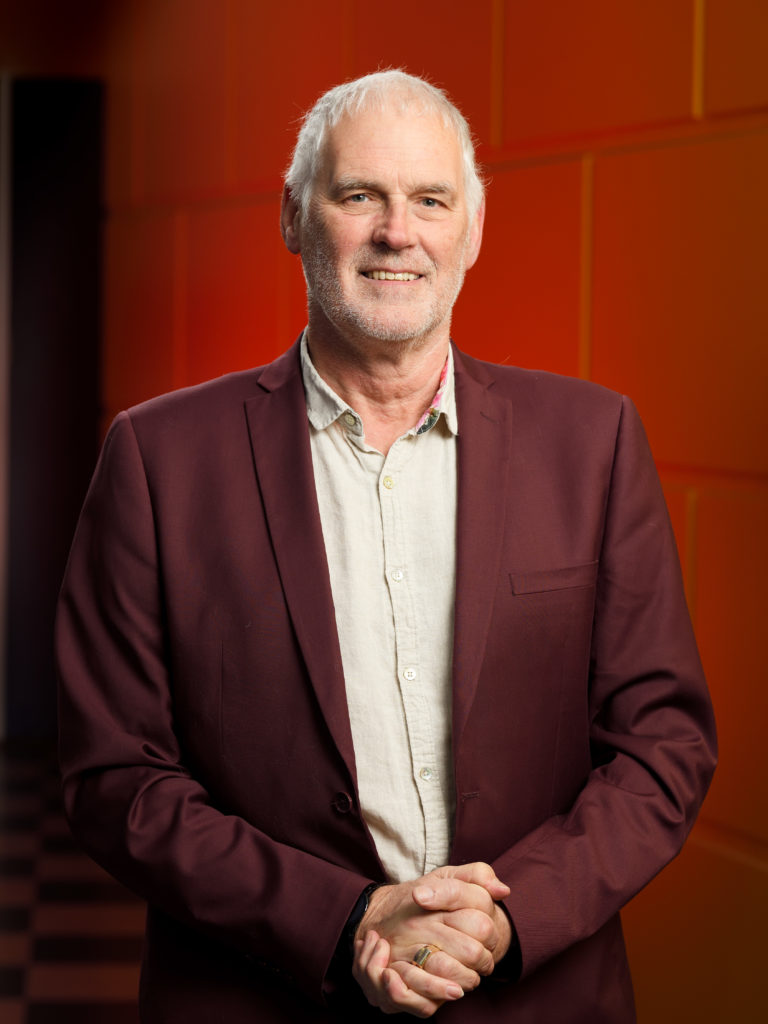
Launch of seminars and coaching
To help with this process, Eindhoven Engine Academy is launching a combination of seminar sessions and assignment coaching (on a problem of the company or project) in order to support the design of innovation for emerging factors, for uncertainty. This process can be organized physically (corona-permitting) or virtually. The topics dealt with are understanding the exponential world, the tools for defining an impactful project, complex adaptive systems & wicked problems, organizing for emerging factors and exponential leadership. Between each workshop session, participants work on their assignment (their project).
First pilot
A first pilot is being organized with some Eindhoven Engine project volunteers and some of the Eindhoven Engine team members involved in the Future of Work. This process will help to define a demo project for the Eindhoven Engine, which we will then open up to all interested parties and facilitate in such a way as to create innovative crossovers. This demo project on the Future of Work will be announced to all in order to encourage participation.
At just over a year old, Eindhoven Engine has already produced a large number of appealing projects. The driving motivation behind this initiative in innovation stimulation is to create an inspiring atmosphere comparable to that of the famous Philips NatLab (Philips Research). Here, clever scientists were more or less free to investigate innovative ideas in close cooperation with colleagues and product designers. Read more…
Source: Mikroniek (a magazine for engineers and technicians working in the area of precision engineering.)
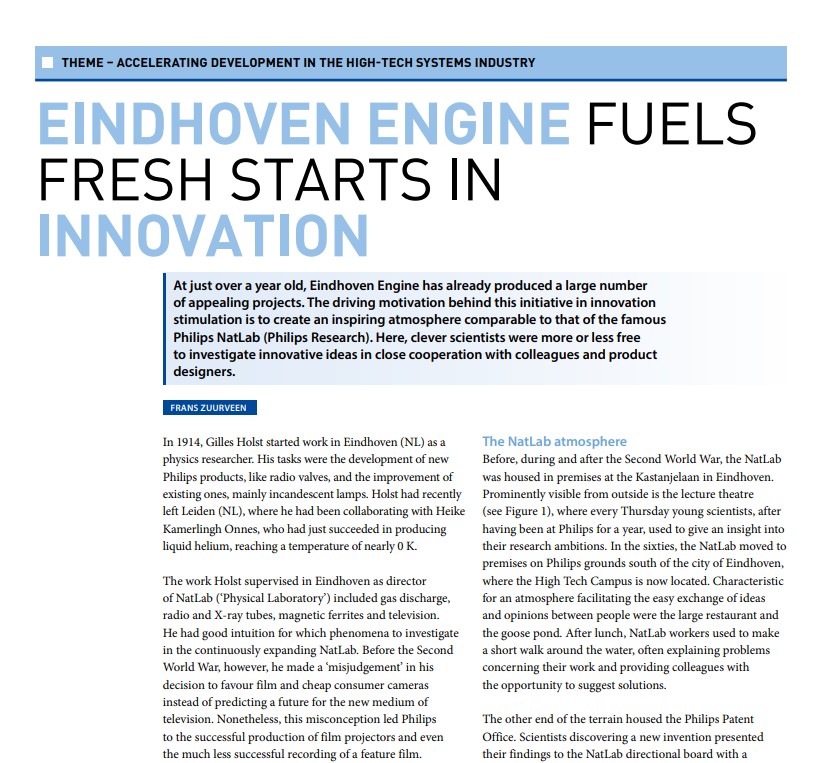

The year 2020 has been a rollercoaster. Due to the COVID-19 measures, we and our project partners have had to adapt and mainly work remotely from our home offices. It was also a very successful year: in July, we granted six new innovation projects in the OpenCall 2020 on top of the nine already in place. Last October, Fontys, TNO and TU Eindhoven became equal shareholders in Eindhoven Engine. Together, we align forces to help accelerate innovations in the Brainport region.
The renovation of our co-location, the MultiMedia Paviljoen building (MMP) on the TU/e Campus, took place and we will return to our co-location as soon as the measures regarding COVID-19 allow: the place where we meet, connect and work on innovative projects. An inspiring and energetic place for our community.
Further in this edition:
- An interview with Jaap Lombaers, a member of the advisory board as representative of TNO, in which he gives his view on combining forces in Eindhoven Engine and working in multidisciplinary projects through co-location
- An interview with Kadans Commercial Manager Pim van Os and Eindhoven Engine Managing Director Katja Pahnke about co-creation and co-location
- Check out the interview with Nico Baken, project leader of the SmartTwo+ project and a TU/e professor and KPN researcher about maverick telecom technologies
- and more…
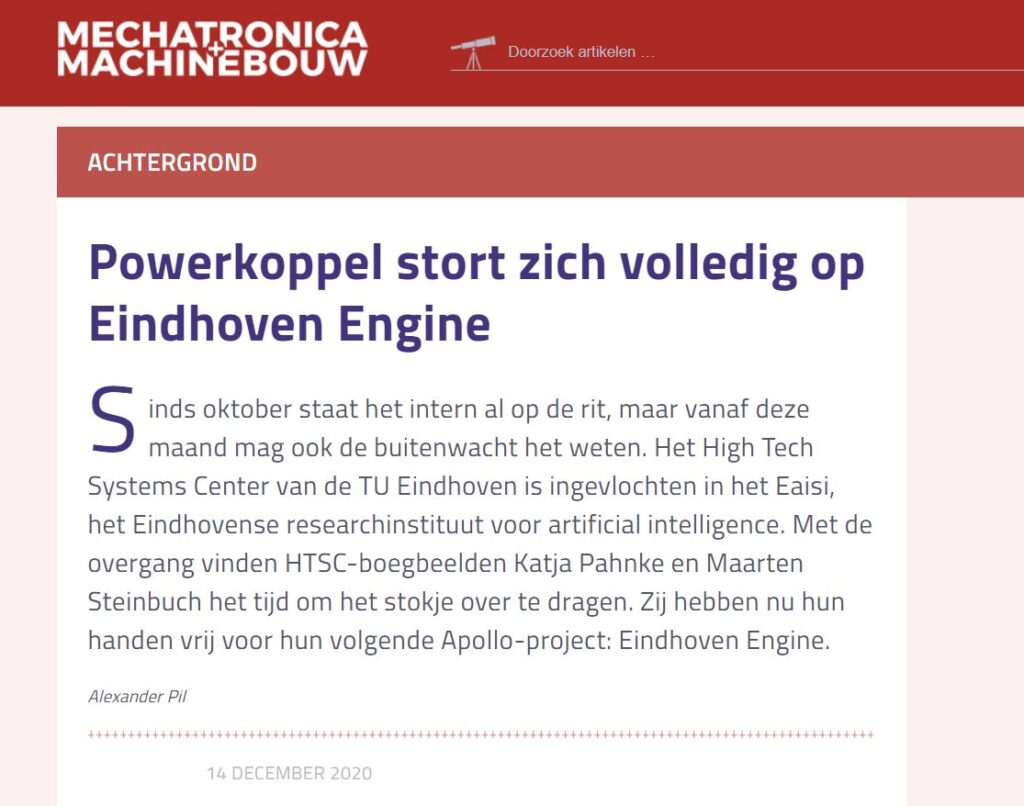
Transforming mindsets in order to empower people and organizations to embrace radical innovation and create a more sustainable world and more humane societies: this is what transformation means at Eindhoven Engine.
The Eindhoven Engine Academy supports this transformation towards innovations regarding the process of innovation itself. It does this in various ways, with its main task being to support the projects and activities of Eindhoven Engine.
Not a traditional academy
The Academy should not be understood as a traditional academy offering seminars and courses to either enrolled participants or the wider public. The Academy is an accelerator, a challenger and a connector of the projects hosted by the Eindhoven Engine. It starts from the challenge at hand, not from the solution. The task (and the desired impact) is the unit of analysis, not the problem-solution itself. This contributes to the richest possible understanding of how solutions might appear. The Academy wants to create and support a learning community in Eindhoven Engine which facilitates innovation acceleration and technology being brought to market. The Academy’s crucial focus is on business model innovation and not so much on technological innovation nor on creating start-ups. It supports technology which is purposeful and impactful (e.g. supports the SDGs or improves quality of life for people).
In the context described above, we work within an innovation ecosystem (Eindhoven Engine) in order to innovate the manner of innovation itself, with a focus on agility and acceleration. The Academy bases its interventions on the following concepts:
- Open innovation
- Co-creation
- Co-location (with virtual extension)
- Activation of the ecosystem’s collective intelligence
- Design thinking and agile innovation
- Systems thinking
- Dealing meaningfully with wicked problems

The Eindhoven Engine Academy supports the projects in the ecosystem and could play a wider role in the Brainport region. It has no ambition to become an institute independent of Eindhoven Engine. Indeed, the Academy can be considered the engine room of Eindhoven Engine.
Failure is the price of innovation
“You have to accept failure. If every project from your innovation department is a success, you are not bold enough in your endeavor to innovate. You are minimizing risks and playing it safe. Failure is inherent to innovation.”
We are sitting in a conference room on the High Tech Campus in Eindhoven and speaking with Jaap Lombaers, Director Knowledge Management and Partnerships at TNO. The room is situated in a modern, open-spaced building with large windows everywhere. Behind Jaap, there is a view into the laboratory. Researchers in white coats and safety goggles walk calmly and decisively from machine to machine under a maze of pipes reflecting the bright ceiling lights.
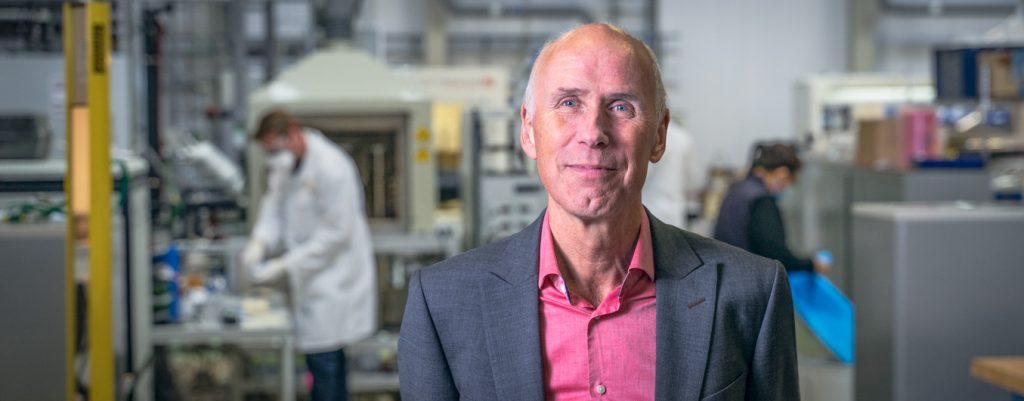
Applying new science and finding a market
A background in industrial design is not overly common for those working in a laboratory but when I mention this to Jaap, his eyes light up and he smiles. “I am inspired by all the things that go on inside this lab. I can tell the story of every machine in this room and why it is important to the progress of solar energy and of innovations in electronics. This lab is the merger of science and application.
You are right, industrial design is integrative rather than specialistic; during my studies, I learned to combine different fields of science and apply them to find new solutions. And this is what we do every day here at TNO.
What we try to accomplish at TNO isn’t just about science. The primary goal is working with large, multidisciplinary teams to create functional and economically-viable solutions. It’s a team effort in which we combine fundamental and applied science in order to create innovative solutions for the market.”
Combining strengths and creating a boost
“TNO is always on the lookout for partners who can amplify the abilities of our own organization. This is one of the reasons we supported the Eindhoven Engine initiative and even became a shareholder.
We appreciate that our partners, TU/e and Fontys, really are different from us and therefore complementary. Where we are trying to apply science, universities are pushing the frontiers of science itself and developing the new talents that industry and research organizations need.
These are bottom-up organizations with students, PhDs and scientists who are conducting new research. This creates a reservoir of young, keen minds which can provide a fresh, new perspective in ongoing projects. TU/e and Fontys are also connected to a vast network of companies, especially in the region of Eindhoven. Just like TNO, they frequently cooperate with large and well-known companies as well as smaller ones which do not have the luxury of extensive R&D departments.
In Eindhoven Engine, we combine these assets. We create multidisciplinary teams of research partners and students, unite them in one location in order to increase collaboration and give ongoing innovation projects a boost.
“If you want to make a leap
in your innovation project in just a couple of years,
Eindhoven Engine is the perfect platform.”
Not every innovation project is suited to Eindhoven Engine. If you want to do in-depth research, you just give scientists a large amount of time and resources to get to the bottom of it. But if you want to make a leap in your innovation project in just a couple of years, Eindhoven Engine is the perfect platform. At the moment, we have a team working on the development of a heat battery, for instance. This is an established program to which Eindhoven Engine adds an extra layer to accelerate the progress. In another project, we are developing solutions for flexible manufacturing (smartly combining the skills of operators with those of robots) alongside Fontys and multiple companies in a field lab on the Brainport Industries Campus (BIC).”
We just started
This kind of coordinated, multidisciplinary and systematic way of doing research is built into the genes of TNO. “We have gained considerable experience over the years in cooperating with different partners and consortia. This experience is what we can add to Eindhoven Engine. But don’t forget, Eindhoven Engine just got started last year. The paint had just dried in the Eindhoven Engine building when the corona pandemic engulfed the world. So, we have to give it some time to see what works well and what has to be improved.
There are still things we have to figure out. How to make smart use of co-location? I would recommend that the teams be situated at the best location given the nature of their projects. I would say that a team working on solar panels, for instance, should situate itself here at Solliance. In this building, we have a whole laboratory equipped to do research on thin-film solar cells. For those teams not permanently located at the Eindhoven Engine co-location, this location could be used as a clubhouse of sorts: a place to visit regularly and where cross-pollination between the different teams involving multiple organizations can occur. I am convinced that we can learn a lot from each other.”
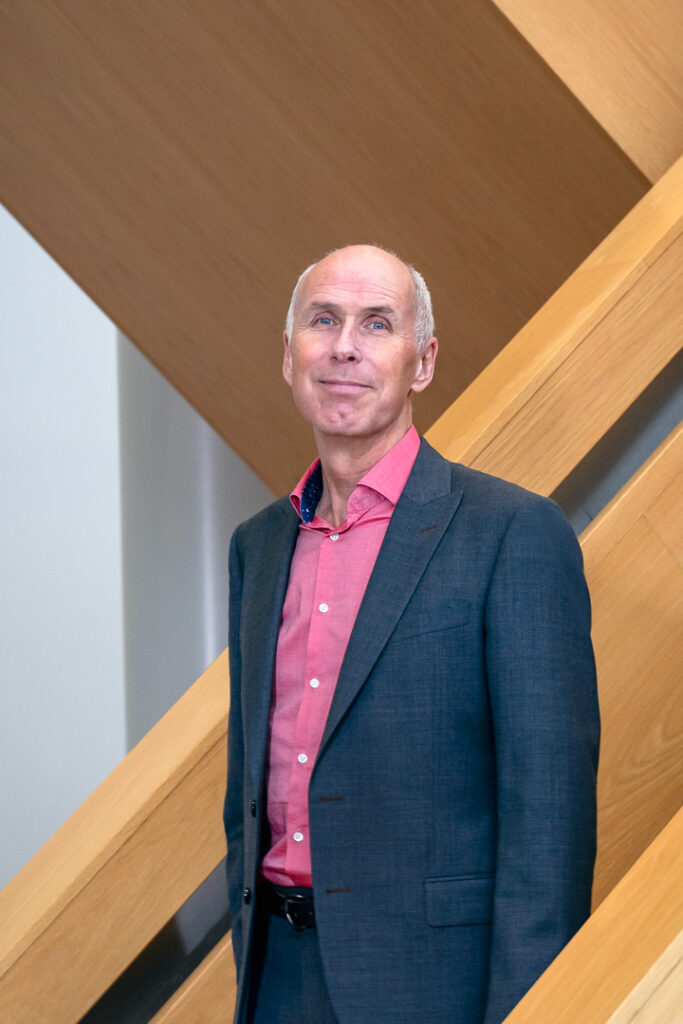
As the site of Eindhoven Engine’s co-location, MMP (previously MultiMediaPaviljoen) plays a key role in Kadans Science Partner’s mission of creating and supporting innovation ecosystems. Kadans Commercial Manager Pim van Os and Eindhoven Engine Managing Director Katja Pahnke discuss how recent renovations help realize this vision.
A mix of old and new
MMP, a multi-tenant office used mainly by TU Eindhoven initiatives, was purchased by Kadans in 2019. Plans for renovation began immediately, as Pim explains.
“It was an old building without the right structure for users – it was actually a bit like a student house! There are three aspects for us: you need to inspire tenants and guests, you need to connect different functions and you need social interaction. Innovation often comes from unexpected corners, like the coffee machine. This is how we approached our renovation plan.”
Kadans aims to stimulate maximum usage of shared areas, increasing the chances of collaboration.’ – Pim
The result is a mix of old and new, bringing together aspects of the building’s former industrial nature with updated elements like flooring and furniture. Kadans aims to stimulate maximum usage of shared areas, increasing the chances of collaboration but also generating a friendly atmosphere in which people look forward to their work. “We didn’t do this alone,” Pim notes. “We did it in good consultation with one of our partners: Eindhoven Engine.”
Eindhoven Engine’s ambition is to boost innovation in ‘unprecedented’ ways, deal with societal challenges and create a unique synergy between (bachelor’s, master’s and PDEng) students, scientists and companies while working on multidisciplinary projects.
In order to facilitate meetings between students, scientists and innovators of industry, we now have a vacancy page for students looking for ground-breaking, impactful assignments in one of Eindhoven Engine’s projects. Projects are invited to post their assignments. Bachelor’s, master’s, PDEng and PhD students who are interested are invited to have a look!
Eindhoven Engine student vacancies website goes live!
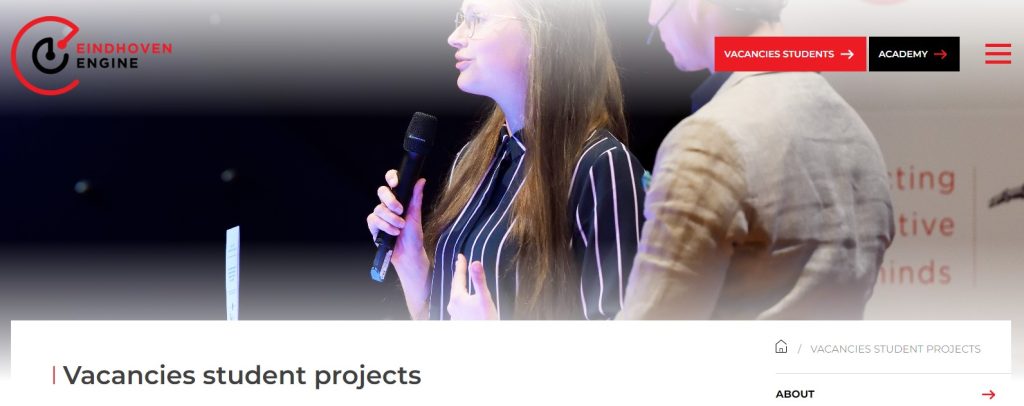
In the Eindhoven Engine project SmartTwo+, KPN and TU Eindhoven collaborate on maverick telecom technologies for the societal challenges of mobility, safety and smart cities. This is where Nico Baken feels at home: as a professor in TU/e’s Electro-Optical Communication group, he’s also spent almost 40 years carrying out fiber-optic research for KPN. In this article, he discusses what Eindhoven Engine’s multidisciplinary approach means to the project.
The need to build bridges
“KPN formally had a lab of their own. In the sixties, there were over 600 people,” begins Nico. “KPN had the UMTS [Universal Mobile Telecommunications System] auctions in July 2000 and discovered in late autumn that they had made a huge mistake and were bankrupt. On 1 January, they sold the laboratory to TNO for one euro. That had quite some consequences. First, we didn’t get an influx of new people from the lab to the operational organization. Second, the connections with the universities were much less strong – there were only a few people left who could even communicate with them.”
This difficult situation led to the formation of Flagship Telecom in 2017, a partnership between KPN and TU/e on areas like software, data analytics and AI. This actively seeks out collaboration and was also the origin of predecessor project SmartOne. “I’m trying to build bridges between KPN and the university, but also inter-faculty,” Nico explains. “One of the points of the Engine is that you get interdisciplinary connections – whether these are between sectors, faculties or companies. Maarten Steinbuch believes in this.”
Mr. Smart City
Another key alignment is Eindhoven Engine’s focus on accelerating the technology-readiness levels of potential applications. “It would be nice to have senior researchers from TU/e in combination with senior people from companies,” continues Nico, “and I hope that the PhDs will be able to make the whole more than the sum of the parts. A lot of contact is needed for that. That’s why it’s good that you have room where all these PhDs come together.
“One of the points of the Engine is that you get interdisciplinary connections.”
In the ongoing pandemic, Eindhoven Engine’s trademark co-location has often had to move to the virtual world, but Nico sees a positive side to this: “KPN could have done any advertisement campaign for Zoom but it wouldn’t have worked as well as corona. That’s a big change. When it’s over, many more people will work from home.”
Alongside ad hoc meetings, the project members hold KPN-organized plenary meetings each quarter and an annual general meeting which includes TU Delft. Regular contact within the project is vital as it provides greater empathy for different perspectives, as seen in disagreements on the smart city element. Nico: “The students regarded me as Mr. Smart City but the first question I asked is do we really want to live in cities? They didn’t like that! The tipping point is 2060, when the world population will decline. We still have some 40 years to think about how we truly want to live.”
Breaking out of silos
A final ingredient is challenge-based learning, in which knowledge is gained by tackling real-world issues. One of the project’s two PDEngs, for instance, is titled Traffic flow modeling and control in a smart city environment and has led to a spin-off mobility project with Utrecht municipality. As the SmartTwo+ network continues to grow, Nico sees opportunities to further revolutionize its methods of collaboration.
“I hope to give the participants more than content: awareness of the integral systemic impact they can have. Of course, the technological developments will need to contribute to sustainability and comfort for all people. But the difficulty at KPN is finding people who have a passion for being a coach to PhDs and PDEngs. You need continuity, so why not reverse the formula? Money and coaches are now coming to the university from KPN, but we could also get some professors for half a year. That’s really forming bridges. If humankind doesn’t make it, it will be because we stayed in silos.”

